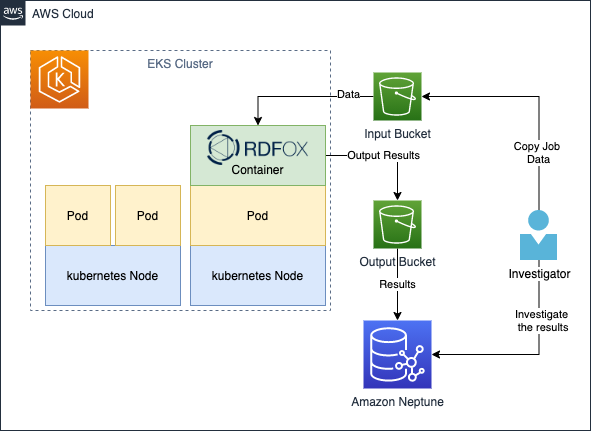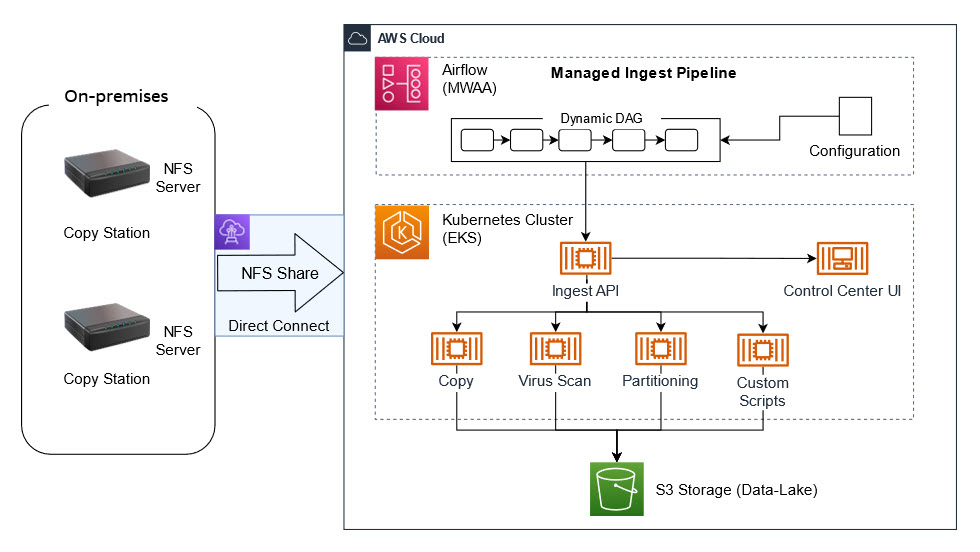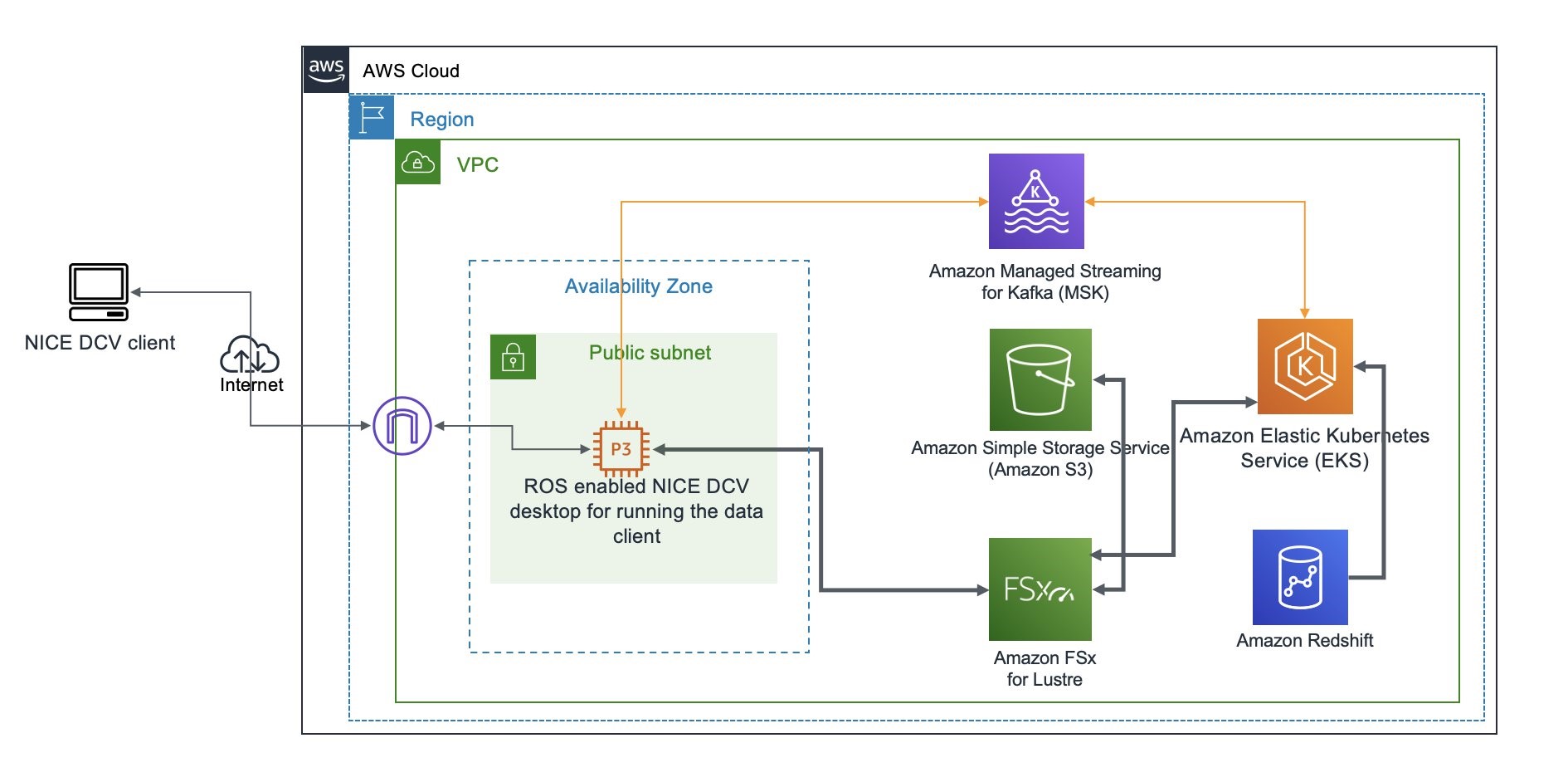AWS Architecture Blog
Category: Industries
How to Run Massively Scalable ADAS Simulation Workloads on CAEdge
This post was co-written by Hendrik Schoeneberg, Sr. Global Big Data Architect, The An Binh Nguyen, Product Owner for Cloud Simulation at Continental, Autonomous Mobility – Engineering Platform, Rumeshkrishnan Mohan, Global Big Data Architect, and Junjie Tang, Principal Consultant at AWS Professional Services. AV/ADAS simulations processing large-scale field sensor data such as radar, lidar, and […]
Financial Crime Discovery using Amazon EKS and Graph Databases
Discovering and solving financial crimes has become a challenge due to an increasing amount of financial data. While storing transactional payment data in a structured table format is useful for searching, filtering, and calculations, it is not always an ideal way to represent transactional data. For example, determining if there is a suspicious financial relationship […]
Detect Real-Time Anomalies and Failures in Industrial Processes Using Apache Flink
For a long time, industrial control systems were the heart of the manufacturing process which allows collecting, processing, and acting on data from the shop floor. Process manufacturers used a distributed control system (DCS) to do the automated control and operation of an industrial process or plant. With the convergence of operational technology and information […]
Developing a Platform for Software-defined Vehicles with Continental Automotive Edge (CAEdge)
This post was co-written by Martin Stamm, Principal Expert SW Architecture at Continental Automotive, Andreas Falkenberg, Senior Consultant at AWS Professional Services, Daniel Krumpholz, Engagement Manager at AWS Professional Services, David Crescence, Sr. Engagement Manager at AWS, and Junjie Tang, Principal Consultant at AWS Professional Services. Automakers are embarking on a digital transformation journey to […]
How fEMR Delivers Cryptographically Secure and Verifiable Medical Data with Amazon QLDB
This post was co-written by Team fEMR’s President & Co-founder, Sarah Draugelis; CTO, Andy Mastie; Core Team Engineer & Fennel Labs Co-founder, Sean Batzel; Patrick Gryczka, AWS Solutions Architect; Mithil Prasad, AWS Senior Customer Solutions Manager. Team fEMR is a non-profit organization that created a free, open-source Electronic Medical Records system for transient medical teams. […]
Ingesting Automotive Sensor Data using DXC RoboticDrive Ingestor on AWS
This post was co-written by Pawel Kowalski, a Technical Product Manager for DXC RoboticDrive and Dr. Max Böhm, a software and systems architect and DXC Distinguished Engineer. To build the first fully autonomous vehicle, L5 standard per SAE, auto-manufacturers collected sensor data from test vehicle fleets across the globe in their testing facilities and driving […]
Optimize your IoT Services for Scale with IoT Device Simulator
The IoT (Internet of Things) has accelerated digital transformation for many industries. Companies can now offer smarter home devices, remote patient monitoring, connected and autonomous vehicles, smart consumer devices, and many more products. The enormous volume of data emitted from IoT devices can be used to improve performance, efficiency, and develop new service and business […]
Field Notes: Building an Industrial Data Platform to Gather Insights from Operational Data
Co-authored with Russell de Pina, former Sr. Partner Solutions Architect at AWS Manufacturers looking to achieve greater operational efficiency need actionable insights from their operational data. Traditionally, operational technology (OT) and enterprise information technology (IT) existed in silos with various manual processes to clean and process data. Leveraging insights at a process level requires converging […]
Field Notes: Building a Data Service for Autonomous Driving Systems Development using Amazon EKS
Many aspects of autonomous driving (AD) system development are based on data that capture real-life driving scenarios. Therefore, research and development professionals working on AD systems need to handle an ever-changing array of interesting datasets composed from the real-life driving data. In this blog post, we address a key problem in AD system development, which […]
Volotea MRO Modernization in AWS
Volotea is one of the fastest growing independent airlines in Europe, and has increased its fleet, routes, and number of available seats year over year. Volotea has already transported more than 30 million passengers across Europe since 2012, and has bases in 16 European capitals. The maintenance, repair, and overhaul (MRO) application is a critical […]









